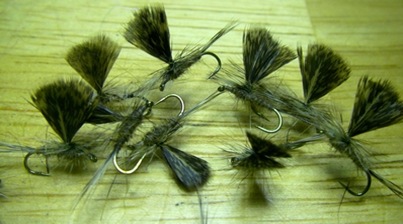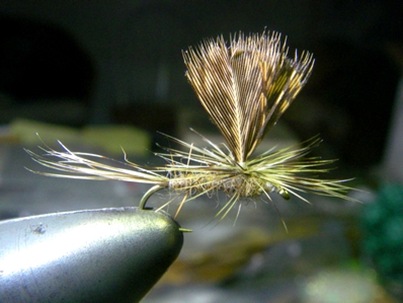Tomorrow I’ll vacate the brown water in preference of a heady “blueline” trout experience. The timing is right as the Trout Underground has abandoned its readership traditional stomping grounds to pursue high-dollar, high cholesterol, exotic locales – complete with liveried butlers, cooks, and guides-in-waiting.
That gives me an opportunity to assist all them unloved Northern California fish by laying waste to the National Park Service’s crown jewel, Manzanita Lake.

Back when I was living in the area, all the fellows lounging on the fly shop’s porch would pile into a truck and fish Fall River in the morning, throw a sandwich in the car and hit Manzanita at noon, fish through the hatch, then be back on Hat Creek in time for the evening. It was the Trifecta of Dry Fly fishing, with the Preakness, the Belmont, and the Kentucky Derby, all in one daylong orgy of silicone and chicken feathers.
Both Hat Creek and Fall River have dwindled significantly from their heyday, but Manzanita Lake has held up remarkably well. Credit goes to the National Park Service, which has had a zero-kill limit on the lake for over a decade. It’s a small lake and patrolled aggressively, and with campgrounds so close – the seasonal aides are quite busy redirecting the unwary to Reflection Lake across the way.
The countless hours spent there formed the basis for all of my lake fishing theory, and can be summed into a single sentence, “They eat the Wing.”
I always oversize the wings on the dries I use in lakes by a full hook size, I can see them better – and I assume the fish can too. All of us regulars had a “double secret” experimental, and despite fishing over the same natural, none of them resembled each other.

We could agree on profile, and if the fly didn’t land correctly it was immediately lifted off the water and recast.
It makes perfect sense, lakes always have a light chop due to the ever present breeze, and like a ship – the masts appear first on the horizon, why wouldn’t a prowling fish key itself to wing and silhouette – likely it’s the first visual cue it sees in the natural.
Making sense and catching fish are not always hand in hand, which is why my compatriots are stocking up on J. Fair’s Wiggle Nymph – rather than take my advice. Conviction is a good thing, but it can lead to force feeding the wrong fly to the right fish.
I’ll be the talkative fellow in the float tube with an excuse for everything.

That’s an interesting theory regarding the oversized wings, and it makes sense. I’ve always had trouble getting such flies to land properly. Usually end up spooking the fish, then taking out the scissors and trimming the wings (too late).
Nice looking bugs.
I used to tie 200-300 dozen #16 parachutes a year for shops, the secret is to keep the hackle on a single plane – tight to the shank.
Trim anything under the fly that would make the fly sit at an angle.
If you draw the fly abruptly toward you, it’ll right the fly about 88% of the time. A six inch yank is usually enough.
You can see from the above flies what I mean. Hackle is low and tight to the shank, and the undersides have no fibers below the plane of the shank.
Don’t worry, I’ll include some of these in your “care package.”